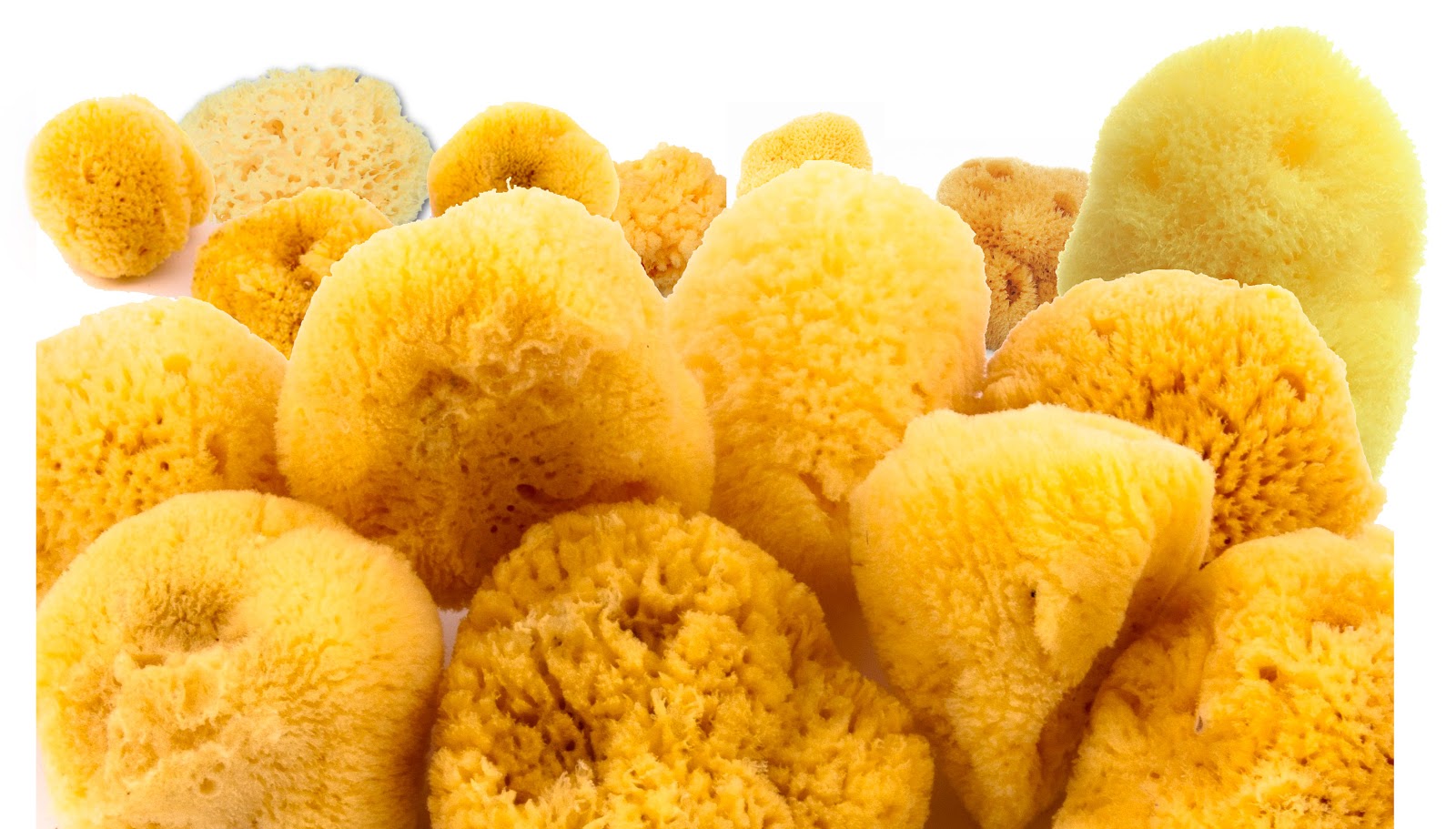The history of the Greek sea sponges goes many centuries back in time. We find descriptions and references of their uses in the writings of Aristotle, Plato and even Homer's works of Iliad and Odyssey!!
Since ancient times the Greeks knew and used the sea sponges as the best natural products for personal hygiene and body skin care.
The Romans also, well known for their famous baths, appreciated immensely the soft quality and the hygienic properties of the natural sea sponges. They made extensive use of natural sea sponges in their everyday personal hygiene and bathroom habits.
The Greek Islands with SIMI, CHALKI and KALYMNOS in the lead have been the most famous and active places for ‘fishing’ and trading the best natural sea sponges all over the world.
Greek ‘SKIN DIVERS’ from many islands would literally 'plough' across the Greek deep and hot sea waters to collect the best and well known worldwide Greek sea sponges.
It seems that in KALYMNOS the sponge 'fishing' (called 'spogaleeia') started some 300 years ago and the first Kalymnian divers used to dive with no special protective equipment (‘SKIN DIVERS’).
At that time the divers would 'plunge' into the sea from a small boat with few crew. The diver would carry with him a cylinder shaped glass lens to help him view the sea bed and spot the sponges.
To help him go down fast the ‘skin diver’ would hold in his arms a heavy stone (15 Kg) called 'skandalopetra'!
The diver would cut clean the sponge from the sea floor, put it in a net (called 'dihty') and bring it up to the boat.
In each diving (called 'voutia') the diver would remain 3-5 minutes underwater and he would reach up to 30 meters deep.
At the beginning of the 19th century Kalymnos and other Greek islands saw a boom of their sponge industry thanks to a new diving standard diving suit called 'skafandron'.
With 'skafandro' the Greek divers could dive deeper (70 meters) and stay much longer underwater.
So the divers soon discovered the better quality and bigger sponges that lived at deeper and hotter waters.
Larger ships with more crew (called 'spogoalieftika') started sailing the Aegean Sea (Pelagos) and sailed across the Mediterranean sea as far as Libya and Egypt, Lebanon and Syria.
These sails could last long time and crew and divers could miss their families for up to 6 months. This is the reason that each island developed their customs to celebrate the time all the ships would leave the little ports full of dreams and aspirations for a ‘good catch' and receive them back, few months later full of sponges and desires to meet with their beloved people parents, wives, sons, daughters, brothers, sisters, lovers, friends, etc.
Along with the business boom and the good money the standard diving suit brought to the islands, the divers had to pay deathly tolls by the name of 'divers' disease'.
That disease was caused by the 'quick decompression' and the production of ‘air bubbles’ in the divers’s blood. The 'disease' often caused serious paralysis and very often through a confined life ended in early death.
It is estimated that the first year the standard diving suit was used almost half of the divers were affected and either became paralysed or died. The numbers recorded show that in total 10.000 divers died and 20.000 were paralysed permanently.
At the beginning of the 20th century the use of the standard diving suit had to be abandoned and many Greek divers moved to other countries, as far as Florida, to look for new opportunities and sponge diving.
At that time safer diving equipment was appearing in the market produced by Nicolas Toth in Florida.
In the fifties sponge 'fishing' went down and for reasons not well known the sponges were affected and disappeared almost to extinction. Today there are only few islanders who 'sponge fish' around the Greek seas and this is the reason that the top quality, famous Greek sponges are scarce and difficult to find.



























